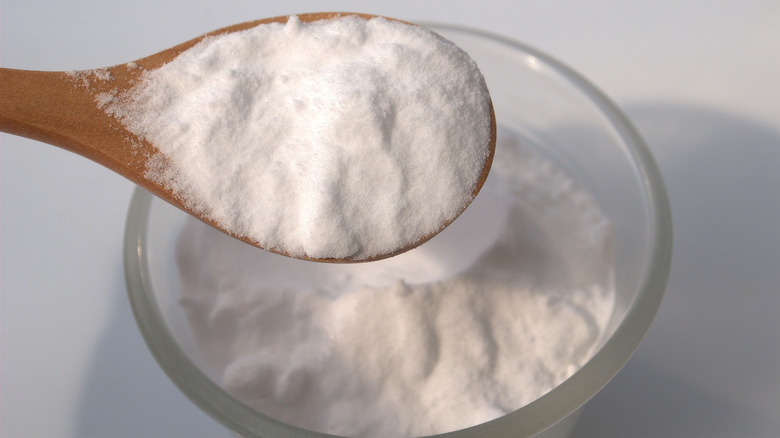Think Twice Before Using This Common Pantry Ingredient In Your Garden
Baking soda has so many unexpected uses when it comes to housework. It can freshen up odors in the fridge, unclog drains, and get those bathroom tiles sparkling clean. It's also a staple item found in almost all kitchen pantries. It's no surprise, therefore, that many people turn to baking soda to see what it can accomplish outdoors in the garden.
Many claim that baking soda can help with things like killing weeds, repelling pests, and adjusting pH in soil, and it's true, but only to a certain extent. The problem is if you go too far with baking soda, the results can cause more harm than good. It's a delicate balance that sometimes might not be worth the hassle or the risk of losing your hard-earned work in the garden.
The main issue with using baking soda, or sodium bicarbonate, is that it is a salt and can be toxic to plants. It's tempting to think of this powder as innocuous and sprinkle it indiscriminately all over your garden soil the same way you do with your cat's litter box, but take heed: Baking soda can damage your garden irreparably.
It's true that baking soda can function as a simple weed killer ingredient, but it will also kill the other plants in your garden, especially if you use too much. Even if you are extra careful to only use it on weedy areas, salt will build up in the soil, and nearby plants will suffer. This is because salt increases the alkalinity of the soil to a point where the pH level is so high it inhibits nutrient absorption through roots. Your plants will eventually wither and die.
When can baking soda be used in the garden?
That said, baking soda does have some good potential uses in the garden. It can, in limited quantities, be used as insecticide and fungicide. This works especially well for ants because it interferes with the scent trails they use to communicate with each other. If using it as an insecticide, however, it's recommended that you sprinkle it directly onto insects, not on the soil. Really though, who has time to be hunting for pests and individually dousing them in baking soda? It's a time-consuming and frustrating endeavor. For those looking for natural alternatives to toxic insecticides, neem oil — a centuries-old pest solution — is a much better choice. Spray it on your plants and soil in the mornings or evenings; avoid using it during hot hours, as it could burn plants. This rule goes for mixes containing baking soda as well.
As a fungicide, some studies suggest that baking soda can mitigate fungal infections on leaves, but applying it too often can cause a buildup of salt, and the baking soda needs to be used before a serious fungal infection has taken hold. Try to get it on your plant leaves early in the season as a preemptive measure. The best way to use baking soda for fungal disease is to mix 1 tablespoon of it in 1 gallon of water with horticultural oil, and spray it only on the leaves of your plants. If fungus has already taken hold, do not spray more than once every 14 days or so.

